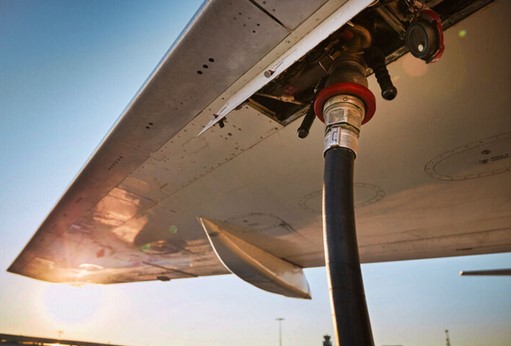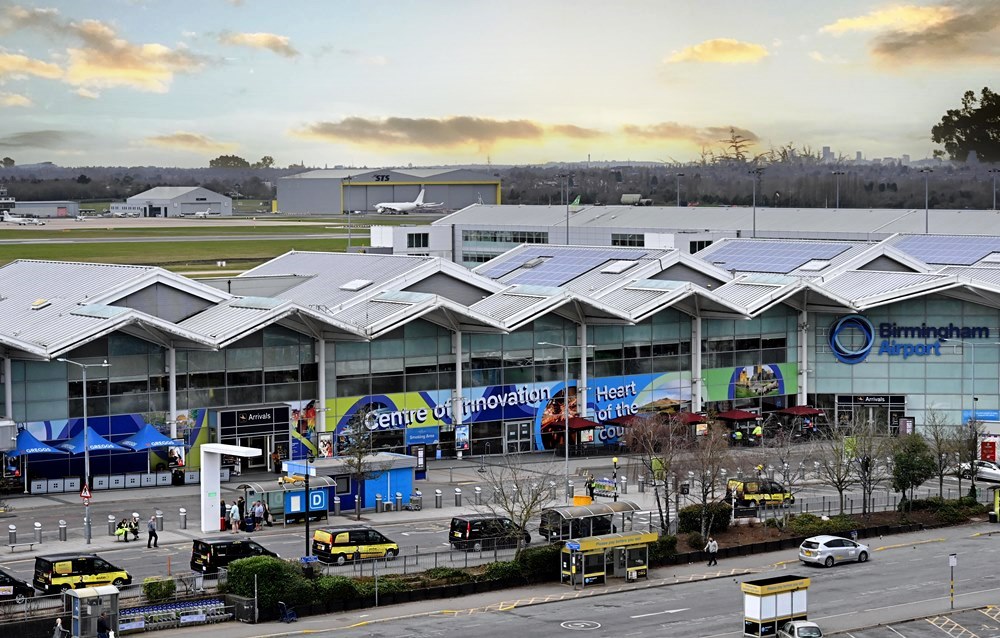IATA sees strong August passenger and freight demand
Global passenger demand was slightly above the 6.1% annual increase for July. August capacity (available seat kilometres or ASKs) increased by 5.5%, and load factor climbed 0.7% percentage point to 85.3%, which was the highest for any month since at least 1990.
.jpg)
"The industry experienced continued strong traffic growth in August, putting the cap on a very good peak travel season. The all-time record load factor reflects that airlines are maximising the efficiency of their assets at a time of rising fuel prices and other costs that are limiting the opportunities for low fare stimulation," said Alexandre de Juniac (above), IATA's Director General and CEO.

International Passenger Markets
August international passenger demand rose 5.6% compared to August 2017, in line with 5.5% year-over-year growth achieved in July. All regions recorded increases, led by airlines in the Asia-Pacific region. Capacity climbed 5.1%, and load factor edged up 0.4 percentage point to 85.0%.
- Asia-Pacific airlines' August traffic increased 7.5% compared to the year-ago period, which was an acceleration compared to a 7.2% rise in July. Capacity rose 6.1% and load factor rose 1.1 percentage points to 82.6%. The upward trend in passenger traffic remains very strong, supported by structural changes, including ongoing rises in living standards in the region, as well as more route options for passengers that translate into time savings and ultimately stimulate demand.
- European carriers saw August demand climb 5.1% year-to-year, which was also an increase from the 4.5% growth recorded in July. However, in seasonally-adjusted terms, growth has tracked sideways since late spring. Capacity rose 4.5%, and load factor climbed 0.5 percentage point to 88.9%, which was the highest among regions. European demand is being affected by mixed signs on the economy as well as possible disruptions from air traffic control strikes.
- Middle Eastern carriers posted a 5.4% traffic increase in August, which was a slowdown from 6.2% in July. Passenger volumes have trended upwards at an 8% annualized rate since the start of the year. Capacity increased 6.3%, with load factor slipping 0.7 percentage point to 80.7%.
- North American airlines' international demand rose 3.7% compared to August a year ago. While this was a slowdown from 4.1% growth recorded in July, this largely reflected developments a year ago rather than any change in the current healthy trend. Capacity rose 3.3%, and load factor grew by 0.4 percentage point to 87.2%.
- Latin American airlines experienced a 4.8% demand increase in August compared to the same month last year, up from 3.5% annual growth in July. Capacity increased by 6.5% and load factor slid 1.3 percentage points to 81.4%. Year-to-year comparisons are distorted by the hurricane-related disruptions of a year ago, and traffic has largely tracked sideways since April in seasonally adjusted terms.
- African airlines' traffic climbed 6.8% in August. While this was a slowdown from the 7.4% growth recorded in July the bigger picture is that demand remains strong, despite an increasingly challenging environment in the continent's largest economies. South Africa slipped back into recession in the second quarter and business confidence in Nigeria has moderated in recent months. Capacity rose 3.8%, and load factor surged 2.2 percentage points to 78.2%.
Domestic Passenger Markets
Demand for domestic travel climbed 7.7% in August compared to August 2017, up from the 7.2% growth recorded in July. Capacity rose 6.2% and load factor increased 1.2 percentage points to 85.7%. All markets reported demand increases albeit with wide variation.

Indian airlines achieved their 48th consecutive month of double-digit traffic growth as demand rose 22.6%. Traffic continues to be stimulated by sizeable increases in the number of domestic routes served.
China airlines' domestic traffic climbed 14.9% in August, which was a four-month high. In both China and India, huge demand increases are being supported by rising living standards and large increases in the number of flight choices.
Alexandre de Juniac said: "Aviation is the business of freedom, reuniting friends and families and connecting businesses to markets. To preserve that freedom, air links need to be maintained. For that reason, it is absolutely critical that UK and EU aviation negotiators achieve a post-Brexit agreement. It is not just about permission for flights to take off and land. Everything from pilots' licenses to security arrangements, and much more besides, needs to be agreed upon. Mutual recognition of existing standards can address much of this, but we cannot wait until the eleventh hour. An assumption that 'it will be all right on the night' reveals little understanding of the complexities involved. Preparations should be made for every contingency, in an environment of far greater transparency than we have seen to date."
Freight
Data for global air freight markets showed demand, measured in FTKs, rose 2.3% in August 2018, compared to the same period the year before. This pace of growth was unchanged from the previous month but was less than half the five-year average growth rate of 5.1%.
Freight capacity, measured in available freight tonne kilometres (AFTKs), grew by 4.5% year-on-year in August 2018. This was the sixth month in a row that capacity growth outstripped demand growth. Yields, however, appear to be holding up.
Growth is being supported by a number of factors, including buoyant consumer confidence, an upturn in the global investment cycle and growing international e-commerce. However, demand is being negatively impacted by three factors:
- A broad-based weakening in manufacturing firms’ export order books. Specifically, export order books in Europe, China, Japan and Korea have fallen in recent months.
- Longer supplier delivery times are being reported by manufacturers in Asia and Europe, the top two global trading areas by volume. This typically means that they have less need for the speed afforded by air freight.
- Risks to global trade from the recent escalation in trade tensions.
Alexandre de Juniac said: “August demand for air cargo grew at 2.3%, unchanged from the previous month. Buoyant consumer confidence, the growth of international e-commerce and the broad-based global economic upturn are behind the growth. But there are downside risks. Order books are weakening and supply delivery times are lengthening. And the growing trade tensions are a specter over the industry. The early focus of tariffs was not on products typically carried by air. But as the list of tariffs grows so does the air cargo industry’s vulnerability. And, we can expect souring trading relations to eventually impact business travel. There are no winners in trade wars.”

Regional Performance
All regions reported year-on-year demand growth in August 2018, except Africa which contracted. All regions reported that capacity growth exceeded growth in demand.
Asia-Pacific airlines saw demand for air freight grow by 1.6% in August 2018 compared to the same period last year. This was an increase over the previous month but a marked slowdown in growth from the past year. Weaker manufacturing conditions for exporters, particularly in Japan and China, have impacted the demand. As the largest freight-flying region, carrying more than one-third of the total, the risks from protectionist measures are disproportionately high. Capacity increased by 3.4%.
North American airlines’ freight volumes expanded 2.8% in August 2018 compared to the same period a year earlier. Capacity increased by 3.2% over the same period. The recent momentum of the US economy and solid trade flows across the Atlantic have helped strengthen demand for air cargo, benefiting US carriers. A pick-up in supply chain bottlenecks, which is typically alleviated by the speed of air freight, may also be benefiting the demand.
European airlines posted the fastest growth of any region in August 2018, with an increase in demand of 3.7% compared to the same period a year earlier. Despite a weakening in manufacturing firms’ export order books in Europe, particularly Germany, international air cargo demand has trended upwards at an annualized rate of 8% over the last six months. Strong conditions on the transatlantic market and a pickup in demand between Europe and Asia have driven this growth. Capacity increased by 5.2% year-on-year.
Middle Eastern carriers’ carriers posted a 2.2% increase in freight volumes in August 2018 compared to the same period last year. This was a significant deceleration in demand over the 5.4% recorded the previous month. The decrease mainly reflects developments from a year ago rather than a substantive change in the near-term trend. International cargo demand is trending upwards at an annualized rate of 6% in the region supported by a pick-up in trade to/from Europe and Asia. Capacity increased 7.9% year-on-year.
Latin American airlines experienced an increase in freight demand growth in August 2018 of 1.6% compared to the same period last year and capacity increased by 5.3%. Some of the smaller markets within the region have seen strong growth in international freight volumes so far this year. Nevertheless, the broader pick-up in demand seen over the last 18 months has now paused.
African carriers saw freight demand contract by 7.1% in August 2018, compared to the same month last year. This was the fifth time in six months that demand contracted. Capacity increased by 6.0% year-on-year. After a peak in demand at the end of 2017, seasonally-adjusted international freight volumes have stopped declining in recent months. However, they remain 8% lower than the November 2017 peak. Demand conditions on all key markets to/ from Africa remain weak.













